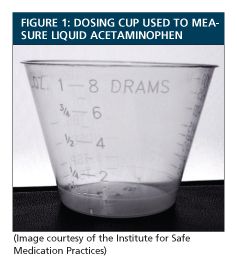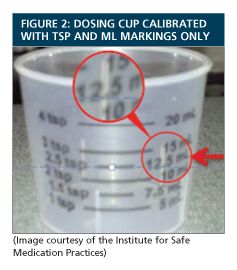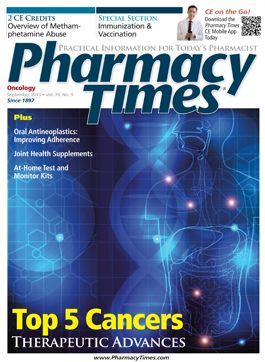Publication
Article
Pharmacy Times
Error-Prone Units of Measure and Device Markings
Author(s):
All too often, mix-ups between metric and nonmetric units cause serious medication errors.

All too often, mix-ups between metric and nonmetric units cause serious medication errors.
In 2011, the Institute for Safe Medication Practices’ Board of Trustees and staff documented their support for complete adoption of the metric system for prescribing and measuring liquid doses.1 All too often, mix-ups between drops and milliliters, teaspoons and milliliters, and minims and milliliters have caused serious medication errors.2 So have abbreviations such as tsp and tbsp. Unfortunately, we have seen these error-prone units of measure, even multiple units of measure, carried over to dosing cups and other devices and contributing to medication errors.

In one case, confusion between drams and milliliters occurred: a nurse gave a patient 5 drams of acetaminophen concentrate liquid (100 mg/mL) instead of 5 mL. That is 18.45 mL, or 1.845 g, of acetaminophen! More than one 15-mL bottle was needed to administer the dose, which was measured in the dose cup seen in Figure 1. On the cup are scales labeled in drams, fluid oz, cc, mL, tsp, and tbsp. There is even an abbreviation for dessertspoon (DSSP). The hospital is in the process of removing these cups from use, exchanging them for dosage cups that measure in milliliters only. Better yet, the hospital should use oral syringes. (As an aside, some facilities are still using concentrated acetaminophen, which was administered in this case to a 10-year-old child. Even though the mainstream industry has switched entirely to a concentration of 160 mg/5 mL for all acetaminophen, apparently the 100 mg/mL [80 mg/0.8 mL] concentrate is still around and potentially dangerous. Check your supplies, remove any concentrated acetaminophen, and replace it with the new standard concentration.)

In a second case, a physician recommended diphenhydrAMINE for a 5-year-old child with an upper respiratory infection. The child’s father purchased a store brand of diphenhydrAMINE liquid (12.5 mg/5 mL), which is sold with a dosage cup. The product label indicates that the dose for children younger than 6 years should be 1 or 2 teaspoons or 12.5 to 25 mg. However, the accompanying dosage cup is calibrated in mL and teaspoons only, not mg, and prominently displays 12.5 mL at about the halfway mark (Figure 2). Because the scales on the dosing cup do not match each of the dose recommendations as listed on the product label, the father nearly missed the mL versus mg distinction. Fortunately, though, just as he was about to give 12.5 mL (31.25 mg) of the medication to his son, he realized the mistake.
Given the potential for confusion and error, this would be a good time to identify whether dangerous measuring devices are in use or sold at your location. Of course, the bottom line is that manufacturers should use only metric units as the calibrated units of measure marked on product labeling and dosage delivery devices. Also, manufacturers should match the dosing information on the label with the dosing scale on the accompanying measuring device. In fact, in May 2011, the FDA published guidance for OTC drugs that notes that devices should be marked with calibrated units of liquid measurement (eg, teaspoon, tablespoon, milliliter) that are the same as the units of liquid measure specified in the directions for the product. The guidance also notes that there should not be any unnecessary markings on the device.3
Dr. Gaunt is a medication safety analyst and the editor of ISMP Medication Safety Alert! Community/Ambulatory Care Edition.
References
- ISMP statement on use of metric measurements to prevent errors with oral liquids. Institute for Safe Medication Practices website. www.ismp.org/pressroom/PR20110808.pdf. Accessed August 1, 2013.
- Gaunt MJ. Safety standards needed for dosing of liquid medications. Pharmacy Times website. www.pharmacytimes.com/publications/issue/2012/April2012/Safety-Standards-Needed-for-Dosing-of-Liquid-Medications. Accessed August 1, 2013.
- Guidance for industry: dosage delivery devices for orally ingested OTC liquid drug products. FDA website. www.fda.gov/downloads/Drugs/GuidanceComplianceRegulatoryInformation/Guidances/UCM188992.pdf. Accessed August 1, 2013.







